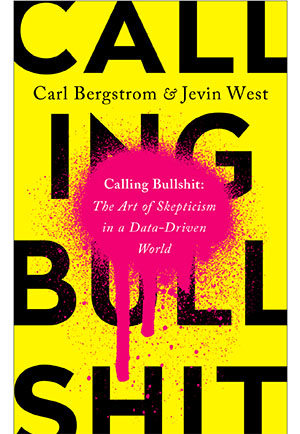The latest book I'm reviewing is about data and critical thinking, and it often makes you laugh. Alongside Moonwalking With Einstein (Penguin, 2011), it’s in the traditional Penguin paperback size and ideal to take with you anywhere. It’s so enjoyable you'll want to complete it ASAP. The writing style is warm, human, and packed with entertaining examples.
|
ADVERTISEMENT |
Apologies for my language, but this book focuses on a key challenge of our times: calling bullshit on lies. To put it more diplomatically, developing the critical thinking skills to spot and challenge misinformation.
|
|
…


Add new comment